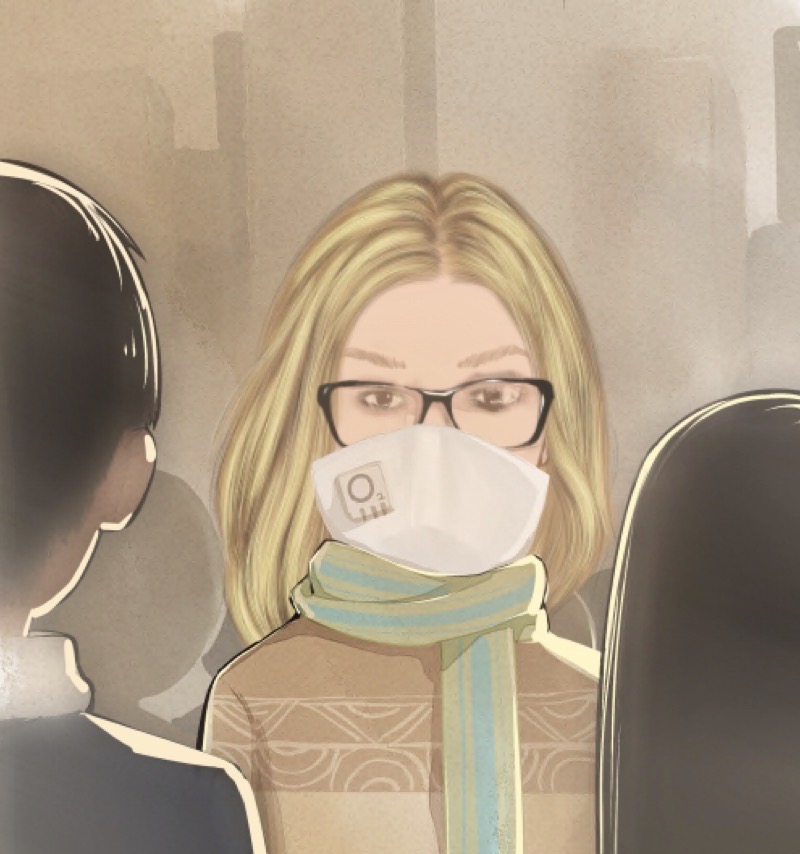















What is Carpa?
Carpa symbolizes a fierce internal battle, a relentless struggle that impacts not only numerous internal and external organs but also the immune system.
Given that Carpa is a rare and orphan disease with no treatment or cure, I am forced to tackle the overwhelming symptoms of the disease every day without medicine or treatments.
After all these years, I have learned from my symptoms what to avoid and how to live, but it is a constant struggle.
As I learn more about this rare condition, its symptoms, and what triggers them, I gain a better understanding of how to manage these triggers to regain control over my health and life.
However, navigating this health nightmare is exhausting, overwhelming, and mentally draining; my resolve and strength are tested daily, and there are moments when I feel like I'm losing my mind.
Understanding Complement Activation-Related Pseudoallergy (CARPA): A Different Kind of Allergic-Like Reaction
CARPA triggers symptoms in multiple organ systems, resembling severe allergic reactions, but they originate from a different biological pathway.
Unlike traditional allergies, which are triggered by the production of Immunoglobulin E (IgE) antibodies, CARPA is caused by the activation of the complement system, a crucial component of the innate immune system. This reaction can be triggered by a variety of substances, most notably certain medications and medical materials.
Living with CARPA involves navigating a unique set of medical challenges. When an allergic reaction is triggered by CARPA, it’s often unpredictable and can occur upon the very first exposure to a trigger, without the typical prior sensitization period required for a true allergy, or it can happen even days later.
Living with this unpredictability creates significant fear, anxiety, and stress for patients requiring medical treatment involving known CARPA-trigger agents.
Therefore, managing CARPA necessitates careful monitoring during infusions of these substances and other medications, premedication, and, in some cases, the exploration of alternative treatments.
The Onset and Symptoms of a CARPA Reaction
Reactions to CARPA can happen quickly, sometimes within minutes of exposure to a trigger. However, it can also take days before any signs of a reaction appear. The symptoms can range from mild to severe and life-threatening, closely resembling anaphylaxis.
Here’s a categorized list of symptoms based on the affected systems: Common Symptoms Include:
- Cutaneous Reactions:
- Red Stripes lymphangitis
- Itching (pruritus)
- Hives (urticaria)
- Morbilliform rash
- Angioedema - swelling, particularly of the face, lips, and tongue
- Respiratory Symptoms:
- Difficulty breathing is a serious concern:
- Shortness of breath (dyspnea)
- Bronchospasm (airway constriction)
- Tachypnea (rapid breathing)
- Cardiovascular Changes:
- These can be particularly dangerous and include:
- A drop in blood pressure (hypotension)
- A rapid heart rate (tachycardia)
- In some cases, a slow heart rate (bradycardia)
- Chest pain
- Changes in heart rhythm (arrhythmias)
- Gastrointestinal Issues:
- Nausea
- Vomiting
- Acute abdominal cramps
- Painful bowel movements
- Neurological Symptoms:
- Dizziness or lightheadedness
The Underlying Mechanism: The Complement Cascade
The complement system is a network of proteins in the blood that, when activated, enhances the body's ability to clear pathogens and damaged cells. In the case of CARPA, certain substances can directly trigger this system, leading to the rapid release of inflammatory mediators called anaphylatoxins (primarily C3a and C5a). These molecules cause the degranulation of mast cells and basophils, which in turn release histamine and other potent chemicals that produce the symptoms of an allergic-like reaction.
Common Triggers for CARPA
A wide array of therapeutic agents and medical materials have been identified as potential triggers for CARPA. These include:
- Nanomedicines: This broad category encompasses liposomal drugs, certain cancer chemotherapies and antifungal medications, micellar formulations, and other nanoparticle-based therapies.
- Biological Therapies: Monoclonal antibodies, which are used to treat various conditions, including cancer and autoimmune diseases, can induce CARPA.
- Intravenous Iron Formulations: Certain types of intravenous iron used to treat anemia are known to be associated with these reactions.
- Radiocontrast Media: The dyes used in imaging procedures, such as CT scans, can also be a trigger.
- Other Medications: A wide variety of other drugs, such as painkillers, antibiotics, chemotherapeutics, steroids, corticoids, anticonvulsants, and monoclonal antibodies, have been associated with CARPA triggers.
Diagnosis and Management
Diagnosing CARPA requires a careful clinical evaluation, as the symptoms are often indistinguishable from those of a true allergic reaction. Management of an acute CARPA reaction is similar to that of anaphylaxis, with a focus on stabilizing the patient. This may include:
- Immediate cessation of the infusion of the suspected trigger.
- Administration of antihistamines to block the effects of histamine.
- Some corticosteroids to reduce inflammation.
- In severe cases, epinephrine may be necessary to treat life-threatening symptoms like severe hypotension and bronchospasm.
For individuals with CARPA who require treatment with medications that could potentially trigger a life-threatening reaction, preventive measures must be implemented, including administering the drug in smaller doses, exploring alternative treatments, and monitoring the patient in a medical facility equipped for emergency anaphylaxis for a minimum of 24 hours.
By taking these precautions, healthcare providers can help reduce or prevent reactions, allowing patients to receive the medical treatments they need safely.
- Red Stripes lymphangitis
- Itching (pruritus)
- Hives (urticaria)
- Morbilliform rash
- Angioedema - swelling, particularly of the face, lips, and tongue
- Bronchospasm (airway constriction)
- Tachypnea (rapid breathing)
- A drop in blood pressure (hypotension)
- A rapid heart rate (tachycardia)
- In some cases, a slow heart rate (bradycardia)
- Chest pain
- Changes in heart rhythm (arrhythmias)
- Nausea
- Vomiting
- Acute abdominal cramps
- Painful bowel movements


